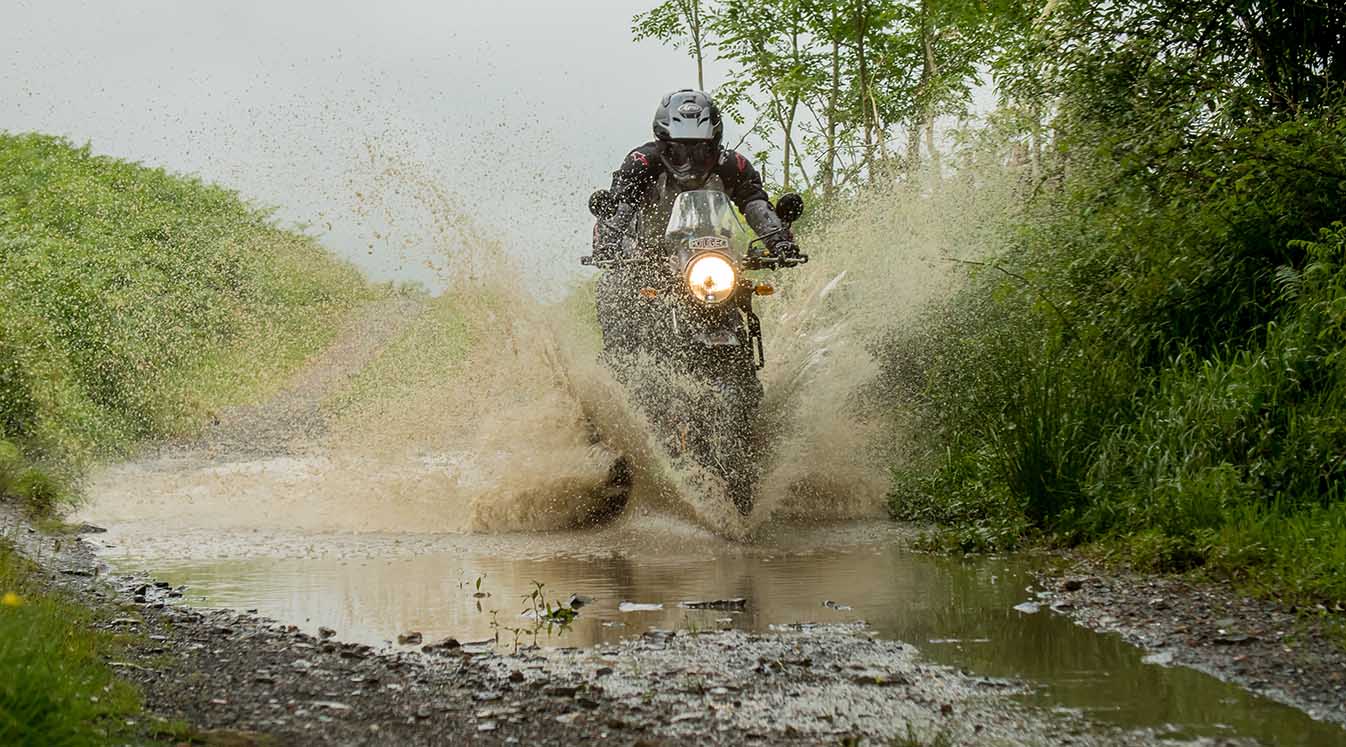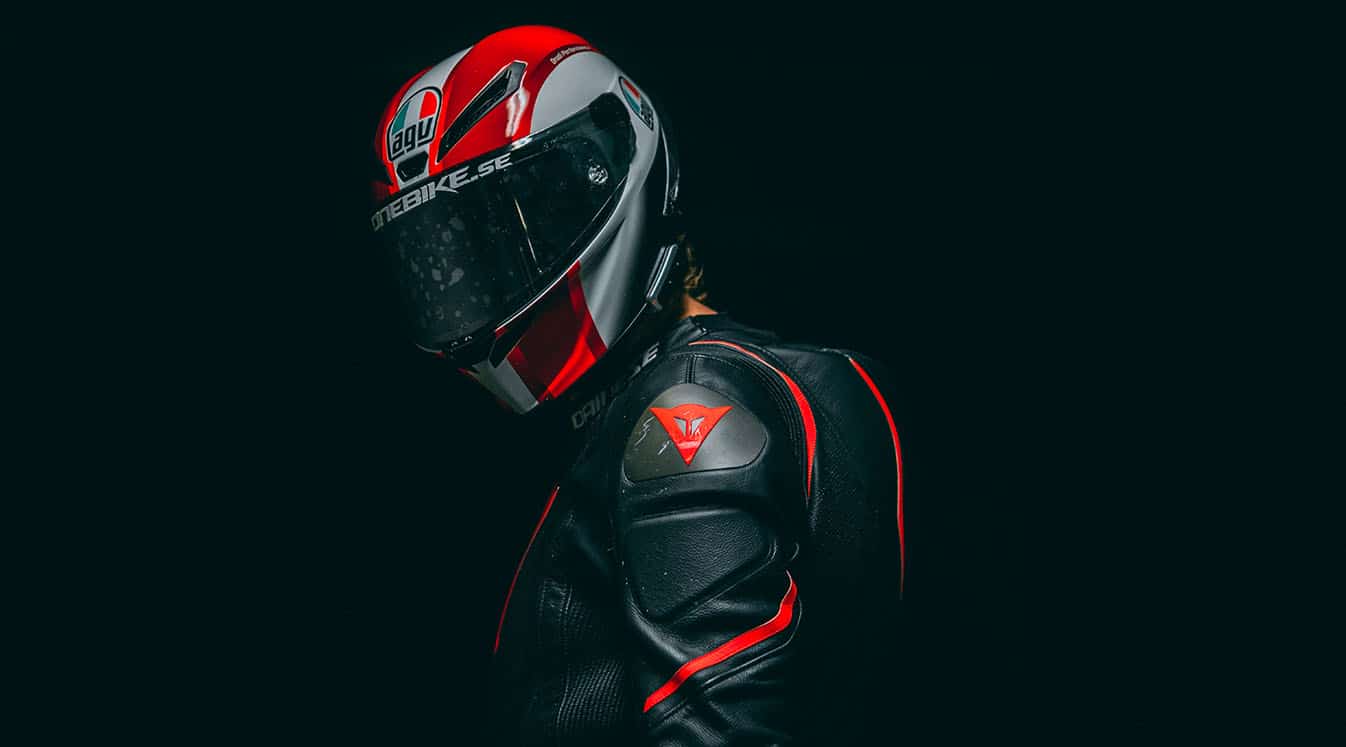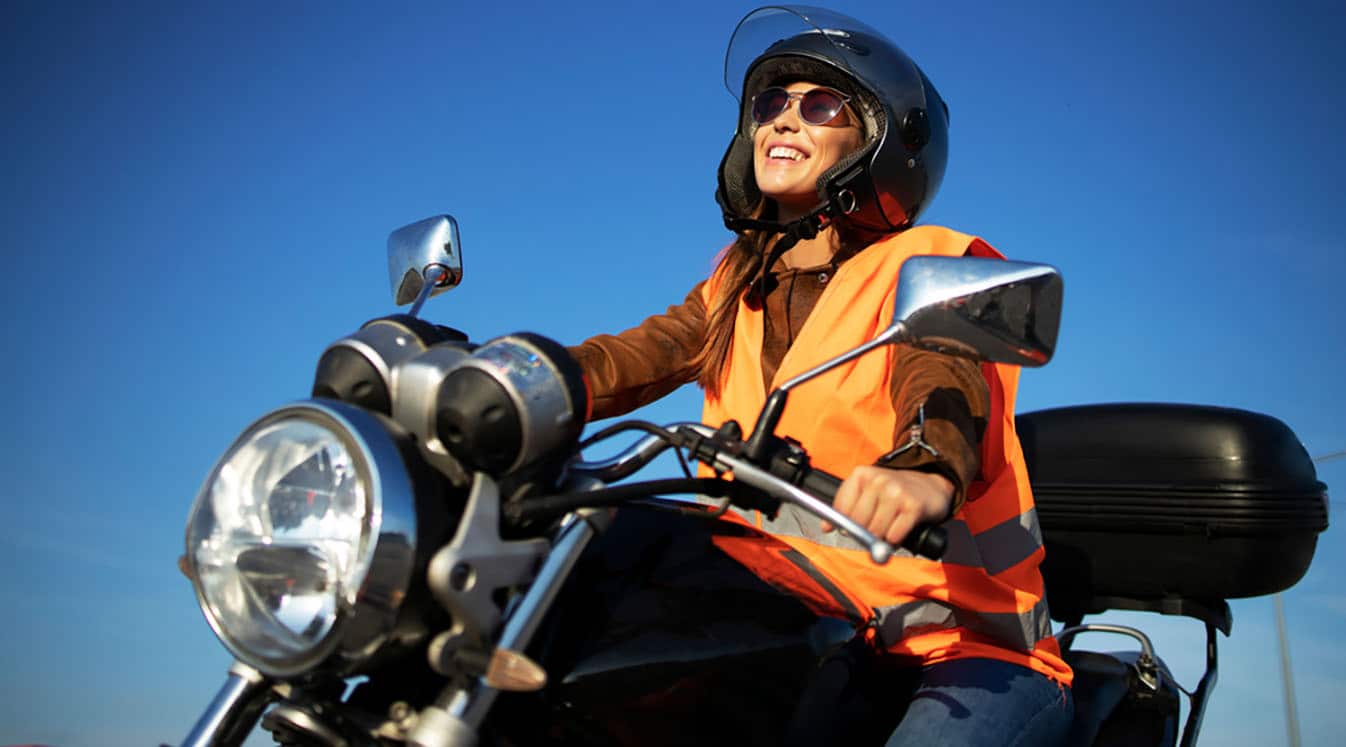If you’re interested in starting off-road riding, this guide is for you. We’ll talk about how to choose the right motorcycle for off-roading, essential technique adjustments you’ll need to make and how a motorcycle Bluetooth headset from Cardo can give you a safer and more enjoyable off-road ride.
What Kinds of Bikes Are Good for Off-Road Riding?
We’ll start with something that’s hopefully obvious: Your sport bike, cruiser, standard or touring bike is not made for off-roading unless it explicitly says so. Now, depending on the road and the bike, most motorcycles can handle dirt or gravel acceptably well, so long as you go slowly and use appropriate tires and the terrain isn’t too extreme. You don’t necessarily need to fear dirt roads on a normal bike, although you should consider getting something that’s a little more built for the outdoors if you find yourself primarily riding on dirt and gravel backroads.
But when it comes to big hills, rutted tracks, water crossings and all of the other things you’ll find in true rural riding, you want a motorcycle that’s designed for off-roading. The different types of motorcycles you should consider for off-road riding are:
-
– Dirt Bikes: For those who want a machine specifically designed for off-roading and nothing else, a dirt bike is where it’s at. Dirt bikes feature tall suspensions, knobby tires and high handlebars with a tight turning radius. Dirt bikes are also used in motocross, which is why you might also hear them referred to as motocross bikes.
- – Examples: Honda CRF250X, Yamaha YZ125, Kawasaki KLX110

-
– Dual-Sport Bikes: A dual-sport is essentially a dirt bike with features that make it safe and legal to ride on the street. Key features of a dual-sport include a more powerful engine and a more versatile suspension that can handle pavement as well.
- – Examples: Suzuki DR650, Yamaha XT250, Honda CRF300L
-
– Adventure Bikes: Adventure motorcycles (also called ADVs) have a chassis that’s more similar to a standard or sport motorcycle than to a dirt bike, but they have features like higher suspensions that make them suitable for light off-road riding. ADV bikes also typically include things like windscreens and fairings that make them more pleasant to ride at highway speeds than dual-sports or scramblers.
- – Examples: Suzuki V-Strom, Honda Africa Twin, Ducati Multistrada
-
– Scramblers: Scramblers are a type of small, stripped-down street motorcycle that are also equipped for basic off-road riding. Many scramblers feature retro styling inspired by the custom off-road machines that early motorcycle enthusiasts designed in their garages.
- – Examples: BMW R nineT, Ducati Scrambler, Triumph Scrambler
Which type of motorcycle will be best for your off-road adventures? It depends on what kind of terrain you’ll be riding. If you’re likely to encounter mud, rocky trails, overgrown paths or other serious outdoor obstacles, a dirt bike or dual-sport is probably a better choice.
On the other hand, if you’ll be on roads as much as you’ll be off them and you plan to stay away from the seriously gnarly stuff, a scrambler or adventure bike may be more appropriate. Dual-sports, adventure bikes and scramblers also have the advantage that you can ride them straight to the trailhead rather than having to pack a dirt bike into a trailer or truck bed.
Most Important Gear for Off-Road Riding
Before any kind of motorcycle ride, you should always make sure you’re geared up properly. And off-road riding requires some slightly different gear from the standard kit you’re (hopefully) already rocking.
These are some tips on what to look for in off-road motorcycle gear:
- – Helmet: A standard motorcycle helmet can be adequate for light off-roading, but you’ll be much better off with something like a dual sport or adventure helmet. Off-road helmets often have a flip-down peak visor that helps protect against branches and flying rocks.

- – Gloves: On a trail ride, being able to work the levers quickly and efficiently is more important than the abrasion resistance that road riders need. Thus, off-road gloves are usually made from lightweight textile materials and include less armor than road gloves.
- – Goggles: Trail riding means constant danger to your eyes from rocks, branches, dirt, bugs and goodness knows what else. That means a good pair of goggles are an absolute must-have, and they should be compatible with your helmet if you’re using a dirt bike helmet or something else without a face shield. You can skip them if you’re using a full face helmet, however.
- – Boots: You need a dedicated set of motorcycle boots for trail riding—no ifs or buts. Motocross-style boots are common for serious off-road riders, but lighter adventure boots are also a popular choice.
- – Jacket: On a trail, road rash is less of a concern than sudden sharp impacts from falling onto rocks. Your shoulders, elbows and spine are typically the areas where you’ll want the most padding in your riding jacket. Skipping armor is usually a bad idea unless you’re riding very gentle terrain.
Explore Our Bluetooth Motorcycle Helmet Speakers

Off-Road Riding Techniques
Off-road riding also demands certain changes in technique from the way you’d normally ride a motorcycle. Proper technique will vary according to what style of off-road bike you’re on, but the most important basics go something like this:
- – To the Front: Begin by making sure that you’re sitting toward the front of the saddle, with your butt positioned over the foot pegs. You don’t need to adopt the same tucked-in, forward-leaning posture as a sport bike rider, since wind is usually less of a concern, but you do need the control that comes with centering your weight on the bike. This is particularly important to focus on if you’re used to riding cruisers or touring bikes, which invite you to settle your weight toward the back of the bike.
- – Watching Your Weight: Much as shifting your weight left or right is important for cornering on any motorcycle, shifting your weight to the front or back of the bike is also a key element of off-road riding technique. On a downhill slope, you’ll want to shift a little bit to the back or even stand up. On an uphill slope, do the opposite, shifting to the front to prevent unintended wheelies.
- – Take a Stand: For dirt bike and dual-sport riders especially, standing up is an essential element of riding. A standing rider will be putting almost all of their weight on the foot pegs, which lowers the center of gravity and makes the bike much easier to control. There’s a lot more nuance to when and how to stand up when off-roading, so make sure to check out some of the many online guides on how to do it.
- – Elbow Grease: You’ll want to hold your elbows out to the sides when riding off-road rather than tucking them in. This will give you much better ability to control your handlebars and navigate tight corners.

- – In a Rut: Ruts in the trail are a fact of life for off-road riders, so learn to deal with them. If there are multiple ruts, look for the shallowest one and try it first. If you can, stand up as you navigate the rut. If you can’t, keep your left foot dangling a little and use it as needed to keep your bike upright.
- – Lean and Leg: Avoid the “MotoGP lean” or any knee-down action when cornering. Instead, lean the bike itself into the corner while keeping your body relatively upright, and stick your inside leg out a little bit as you turn. This accomplishes two things: One, it helps you avoid tipping over and, two, if you feather the ground with your foot a little bit, it pushes your front tire into the turn, which provides better grip.
- – Braking Bad: Actually, braking is good, but you’ll need to learn the right way to do it on an off-road bike. First, remember that off-road riding happens at much lower speeds than road riding, and off-road bikes tend to be substantially lighter. Thus, apply your brakes lightly whenever possible because you probably need less power than you’ll first assume. Second, some riders recommend employing the rear brake more than you would on the road, as its lighter touch will help you avoid skids and slides. Aim for an approximately 60/40 balance between front and rear brakes, respectively.
Safety and Etiquette Basics for Trail Riding
Technique and gear are important, but it’s just as key to know the basic safety rules and the etiquette that protects the trails that sport enthusiasts work hard to build. Here’s what you need to know:
- – Don’t ride alone. It’s always better to have a buddy with you who can go for assistance if you get injured or help pull your bike out of a rut.
- – Stay on the trail. Yes, you’re off-roading, but you may very well run into a sudden drop-off or something else you’re not prepared for if you venture off the trail. Plus, you’re likely to damage the local ecosystem.

- – Take it slow. You’re (probably) not in a race, so don’t act like you are. Go slowly enough that you can pay close attention to the trail in front of you and prepare for upcoming hazards.
- – Know your limits and don’t try to take on terrain that’s way beyond your abilities. It’s better to avoid injury now and come back later when you’re more skilled and better prepared.
-
– Water crossings require special care and consideration. The best option is always to find a dry way over, such as a fording point or bridge. If you can’t, here’s a few basic tips for water crossings:
- – Make sure the water level is below the lowest air intake on any bike in your riding group.
- – Be aware of the dangers from slippery surfaces covered in algae.
- – Plan your route, and always start upstream of your intended exit point if possible.
- – For most bikes, cross in first or second gear, going 5-10 miles per hour with medium to high revs, and not stopping on the way through unless you really have to.
- – Stand if possible while riding through water crossings.
- – If you can tell your bike is about to have its air intakes submerged, kill the engine as quickly as you can and start walking it.
Helmet Communicators for Off-Road Riding
Don’t overlook the importance of a good motorcycle Bluetooth headset when off-roading. A helmet intercom will help your riding group stay in touch with each other and communicate about upcoming obstacles on the trail. That’s crucial for staying safe, especially when riding in isolated areas where help might not be close at hand.

A helmet communicator system with a good pair of Bluetooth motorcycle speakers will also make your ride a more fun experience. You’ll love being able to shoot the breeze with your friends as you ride, and you’ll also be able to enjoy your favorite music or podcasts.
The Cardo Systems Packtalk EDGE and Packtalk NEO are great choices for any off-road rider. These state-of-the-art communicator systems use dynamic mesh network technology to provide clear communication at ranges of up to a mile—perfect for a long trail ride where riders might not always be able to see each other.
Motorcycle Communication Systems Designed to Perform
Off-road riding is a fun activity for riders of all kinds, and Cardo Systems has more resources for those interested in an au naturel riding environment. New dirt bike riders can get a lot of mileage out of our guide to dirt bike riding for beginners, and our motorcycle camping gear checklist can help you prepare for a trip into the wilderness. Finally, if your off-road excursions often happen on four wheels instead of two, make sure to read our rundown of ATV hand signals to help you stay safe on the trails.





